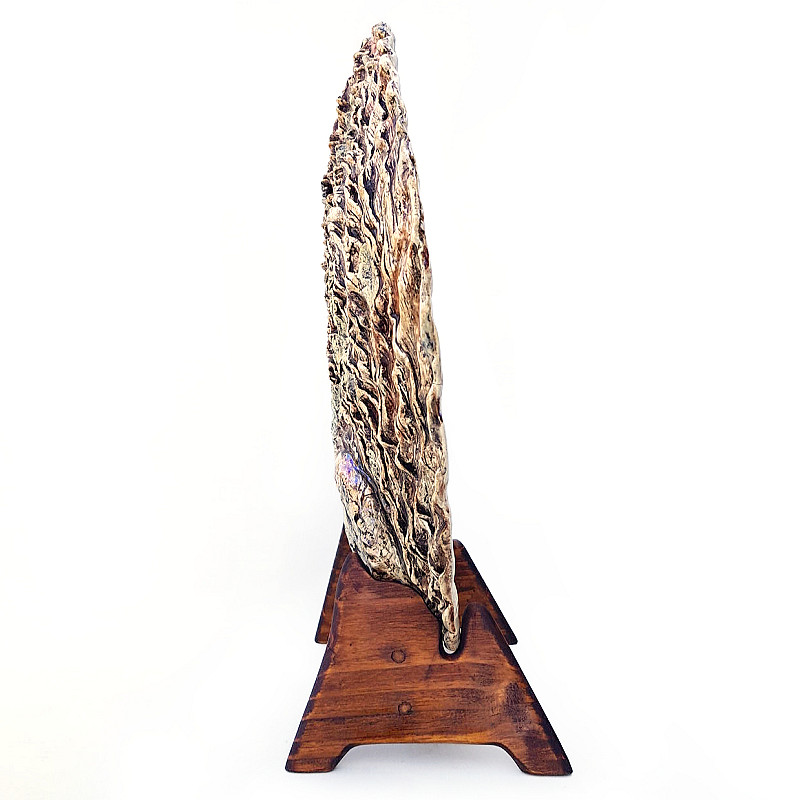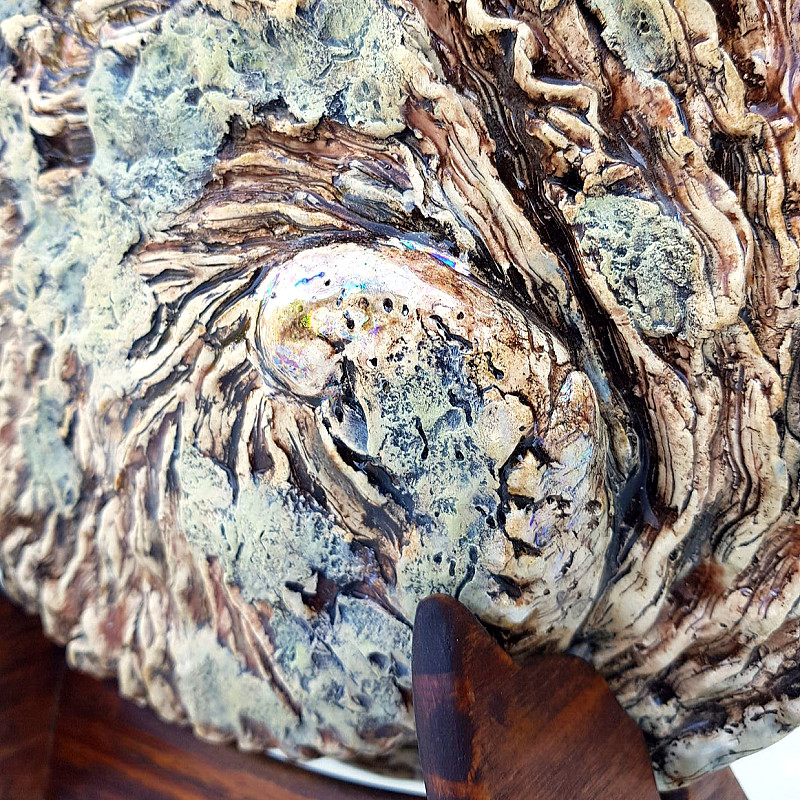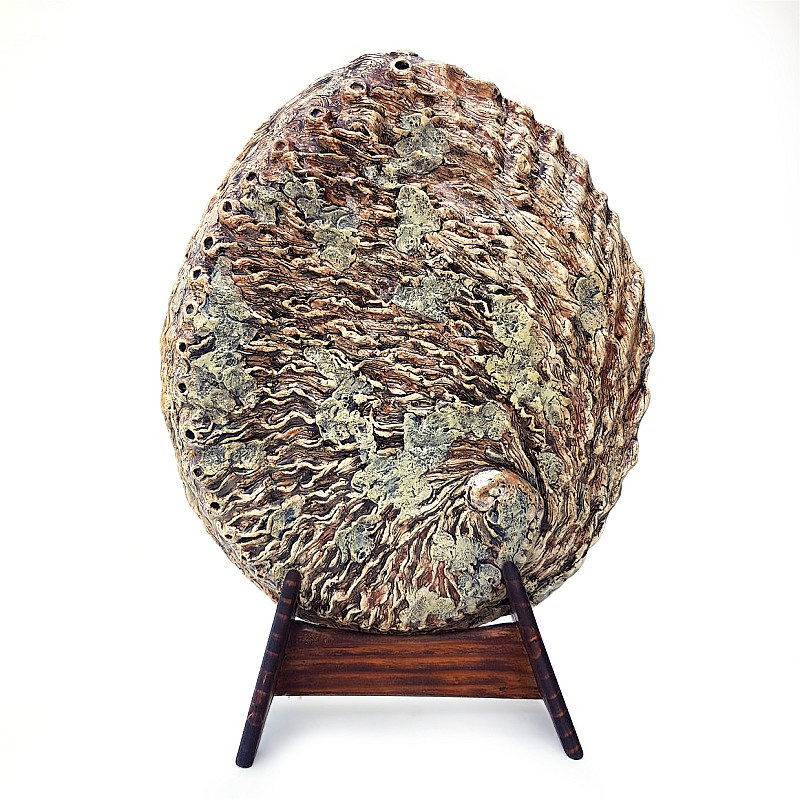- Blombos
- Nelis Singels
- 2024
- Handbuilt Stoneware Ceramic
- Signed & Dated by The Artist
- 43 x 36 x 8 centimeters
"This piece is about more than just recreating a beautiful form in nature. In a way its about the heritage of all.
The consumption of shellfish along the Cape coast was a crucial stepping stone in the genesis of creativity in modern humans during the middle stone age. The oldest example of artistic expression has been found along the Cape coastline and dated to 75 000 years ago.
Shells not only played a part in housing the omega3 rich resource that propelled brain development, but resulted in having spare time for contemplation and creativity. This piece is named after a key archaeological site on the Cape South Coast, Blombos cave. Amongst the plethora of finds an abalone shell (Haliotis midae) was discovered. Once used to contain red ochre pigment.
Abalone continues to be part of contemporary South Africa. It is difficult to fully describe its place in South African psyche. When perlemoen or abalone is mentioned it is a weighted word. I can still remember visiting my grandfather as a young boy and smelling perlemoen being prepared in the traditional way, ground, with cream, nutmeg etc and served on a bed of rice and my mother's cousin would freedive for perlemoen at Onrus over the holidays. Back then you were allowed 5 per day I think. Almost unimaginable today.
In my short lifetime abalone has become so over exploited and leveraged as a commodity that it lead to a part of our heritage as South Africans being stolen, but the connection is not dead.
I feel our generation are the custodians that have the responsibility of keeping this special connection alive. Not only to remind the next generation of its historical value as sustenance, but the unique position it occupies as part of our heritage."





